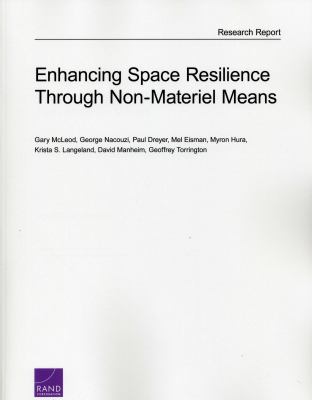
Book
|
Enhancing space resilience through non-materiel means
Copies
1 Total copies, 1 Copies are in,
0 Copies are out.
Title
Enhancing space resilience through non-materiel means
Authors
Subjects
Language
English
Published
Santa Monica, CA : RAND Corporation, [2016]
Publication Desc
xxii, 70 pages : color illustrations ;
ISBN
0833093134 (pbk.)
Series
Dimensions
28 cm








